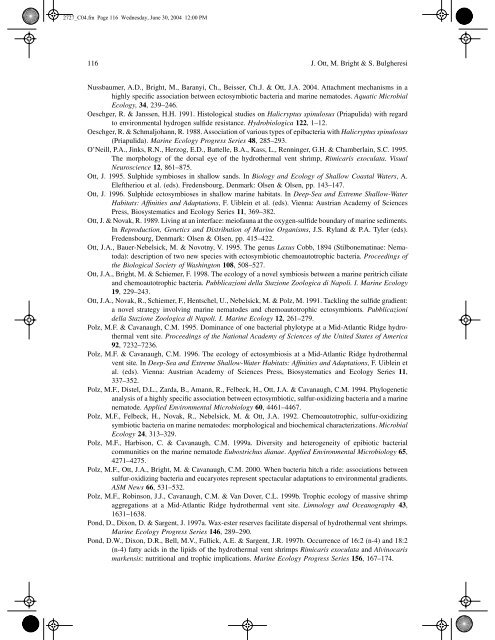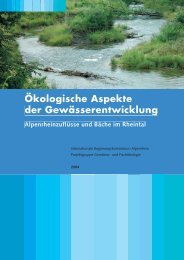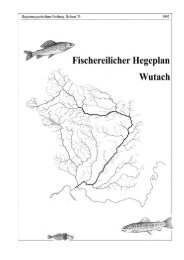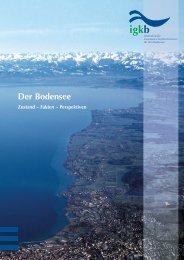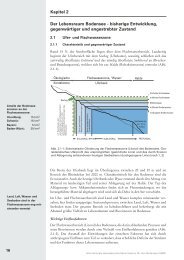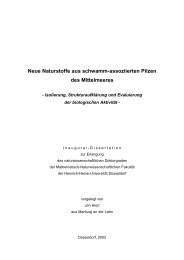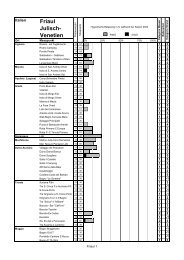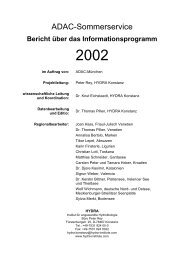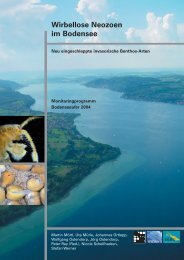marine microbial thiotrophic ectosymbioses - HYDRA-Institute
marine microbial thiotrophic ectosymbioses - HYDRA-Institute
marine microbial thiotrophic ectosymbioses - HYDRA-Institute
You also want an ePaper? Increase the reach of your titles
YUMPU automatically turns print PDFs into web optimized ePapers that Google loves.
2727_C04.fm Page 116 Wednesday, June 30, 2004 12:00 PM<br />
116 J. Ott, M. Bright & S. Bulgheresi<br />
Nussbaumer, A.D., Bright, M., Baranyi, Ch., Beisser, Ch.J. & Ott, J.A. 2004. Attachment mechanisms in a<br />
highly specific association between ectosymbiotic bacteria and <strong>marine</strong> nematodes. Aquatic Microbial<br />
Ecology, 34, 239–246.<br />
Oeschger, R. & Janssen, H.H. 1991. Histological studies on Halicryptus spinulosus (Priapulida) with regard<br />
to environmental hydrogen sulfide resistance. Hydrobiologica 122, 1–12.<br />
Oeschger, R. & Schmaljohann, R. 1988. Association of various types of epibacteria with Halicryptus spinulosus<br />
(Priapulida). Marine Ecology Progress Series 48, 285–293.<br />
O’Neill, P.A., Jinks, R.N., Herzog, E.D., Battelle, B.A., Kass, L., Renninger, G.H. & Chamberlain, S.C. 1995.<br />
The morphology of the dorsal eye of the hydrothermal vent shrimp, Rimicaris exoculata. Visual<br />
Neuroscience 12, 861–875.<br />
Ott, J. 1995. Sulphide symbioses in shallow sands. In Biology and Ecology of Shallow Coastal Waters, A.<br />
Eleftheriou et al. (eds). Fredensbourg, Denmark: Olsen & Olsen, pp. 143–147.<br />
Ott, J. 1996. Sulphide <strong>ectosymbioses</strong> in shallow <strong>marine</strong> habitats. In Deep-Sea and Extreme Shallow-Water<br />
Habitats: Affinities and Adaptations, F. Uiblein et al. (eds). Vienna: Austrian Academy of Sciences<br />
Press, Biosystematics and Ecology Series 11, 369–382.<br />
Ott, J. & Novak, R. 1989. Living at an interface: meiofauna at the oxygen-sulfide boundary of <strong>marine</strong> sediments.<br />
In Reproduction, Genetics and Distribution of Marine Organisms, J.S. Ryland & P.A. Tyler (eds).<br />
Fredensbourg, Denmark: Olsen & Olsen, pp. 415–422.<br />
Ott, J.A., Bauer-Nebelsick, M. & Novotny, V. 1995. The genus Laxus Cobb, 1894 (Stilbonematinae: Nematoda):<br />
description of two new species with ectosymbiotic chemoautotrophic bacteria. Proceedings of<br />
the Biological Society of Washington 108, 508–527.<br />
Ott, J.A., Bright, M. & Schiemer, F. 1998. The ecology of a novel symbiosis between a <strong>marine</strong> peritrich ciliate<br />
and chemoautotrophic bacteria. Pubblicazioni della Stazione Zoologica di Napoli. I. Marine Ecology<br />
19, 229–243.<br />
Ott, J.A., Novak, R., Schiemer, F., Hentschel, U., Nebelsick, M. & Polz, M. 1991. Tackling the sulfide gradient:<br />
a novel strategy involving <strong>marine</strong> nematodes and chemoautotrophic ectosymbionts. Pubblicazioni<br />
della Stazione Zoologica di Napoli. I. Marine Ecology 12, 261–279.<br />
Polz, M.F. & Cavanaugh, C.M. 1995. Dominance of one bacterial phylotype at a Mid-Atlantic Ridge hydrothermal<br />
vent site. Proceedings of the National Academy of Sciences of the United States of America<br />
92, 7232–7236.<br />
Polz, M.F. & Cavanaugh, C.M. 1996. The ecology of ectosymbiosis at a Mid-Atlantic Ridge hydrothermal<br />
vent site. In Deep-Sea and Extreme Shallow-Water Habitats: Affinities and Adaptations, F. Uiblein et<br />
al. (eds). Vienna: Austrian Academy of Sciences Press, Biosystematics and Ecology Series 11,<br />
337–352.<br />
Polz, M.F., Distel, D.L., Zarda, B., Amann, R., Felbeck, H., Ott, J.A. & Cavanaugh, C.M. 1994. Phylogenetic<br />
analysis of a highly specific association between ectosymbiotic, sulfur-oxidizing bacteria and a <strong>marine</strong><br />
nematode. Applied Environmental Microbiology 60, 4461–4467.<br />
Polz, M.F., Felbeck, H., Novak, R., Nebelsick, M. & Ott, J.A. 1992. Chemoautotrophic, sulfur-oxidizing<br />
symbiotic bacteria on <strong>marine</strong> nematodes: morphological and biochemical characterizations. Microbial<br />
Ecology 24, 313–329.<br />
Polz, M.F., Harbison, C. & Cavanaugh, C.M. 1999a. Diversity and heterogeneity of epibiotic bacterial<br />
communities on the <strong>marine</strong> nematode Eubostrichus dianae. Applied Environmental Microbiology 65,<br />
4271–4275.<br />
Polz, M.F., Ott, J.A., Bright, M. & Cavanaugh, C.M. 2000. When bacteria hitch a ride: associations between<br />
sulfur-oxidizing bacteria and eucaryotes represent spectacular adaptations to environmental gradients.<br />
ASM News 66, 531–532.<br />
Polz, M.F., Robinson, J.J., Cavanaugh, C.M. & Van Dover, C.L. 1999b. Trophic ecology of massive shrimp<br />
aggregations at a Mid-Atlantic Ridge hydrothermal vent site. Limnology and Oceanography 43,<br />
1631–1638.<br />
Pond, D., Dixon, D. & Sargent, J. 1997a. Wax-ester reserves facilitate dispersal of hydrothermal vent shrimps.<br />
Marine Ecology Progress Series 146, 289–290.<br />
Pond, D.W., Dixon, D.R., Bell, M.V., Fallick, A.E. & Sargent, J.R. 1997b. Occurrence of 16:2 (n-4) and 18:2<br />
(n-4) fatty acids in the lipids of the hydrothermal vent shrimps Rimicaris exoculata and Alvinocaris<br />
markensis: nutritional and trophic implications. Marine Ecology Progress Series 156, 167–174.


